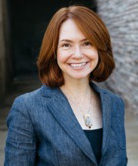
Making More of a Diverse Online Classroom
Teaching and learning become rich and exciting when any classroom makes room for and taps into the resources of diverse backgrounds, contexts, and identities. Also, it’s the right thing to do. When I began teaching online, I knew classroom diversities might increase due to broadening access, but I suspected student diversities could also be less visible due to the individuating and sometimes alienating aspects of technology. Yet in online contexts, foregrounding and integrating room for diversities into teaching and learning is surprisingly easier than you might imagine. Online students have more ways to participate in conversation, experience greater equity from the outset, and often exhibit deeper transparency. How can an online educator make more of diversities in a virtual classroom and tap into their teaching and learning potential?
Increased access to classroom diversities was an important draw for me into online education because I teach at a theological school in the far eastern corner of Tennessee. During a 2014 sabbatical, I traveled throughout the United States, Europe, Africa, and Mexico. In many places, vital and thriving ministry was happening without good access to theological education. Many of the people I encountered would not be able to relocate to my school. I began imagining a classroom where a male, Kenyan micro-lender in the Mathare slum district of Nairobi and a Chicago-based, African American woman in urban church planting could have access to theological education and both be in the same room learning together and from one another. The kind of diversities I imagined while traveling now exist in my online contexts, and I aim to embrace them as an asset in theological education.
How can online teaching and learning make room for greater diversities? Begin by welcoming student engagement that makes connections to students’ own contexts and backgrounds. Then, incentivize, encourage, and reward these connections across your course design: in opening introductions; discussion posting; student selection of readings, assignments, and projects; and integrative exercises like papers or exams. In all learning tasks and rubrics, objectives should include making resourceful connections to one’s own history, identity, or current contexts. Keep students engaged and invested while simultaneously making learning moments more tangible by emphasizing the contribution of student diversities to learning. Doing so makes diversities a more visible and constructive part of teaching and learning. Students are invited to witness connections happening in the work of their peers and are drawn to do the same. They begin to hear, learn, and feel challenged by their own and others’ diverse perspectives and orientations.
Yet, I’ve learned along the way that the contours of online classroom diversities are unpredictable and can unfold in unexpected ways. For example, a white, male American student in an online course entered imagining he had no resources from his own context for theological learning. He named his rural and poor upbringing, and his ministry experience in both conservative and progressive West Virginia congregations as limitations. In response, other students helped him recognize the displacements and pressures that were indeed shaping his theological convictions. Identity in online contexts includes complex and shifting aspects of race, sexuality, trauma, geography, economics, citizenship, displacements, and more. Often, students’ own self-awareness around this multi-layered complexity is shifting in the midst of a course and in response to readings, peer-to-peer engagement, and/or assignments.
Hosting spaces where students are invited to name what they are learning from their own contexts and backgrounds and from those of their peers becomes vital. Online learning tends to feel more “democratic” because it allows all learners to enter discussions under similar parameters. But online educators must be aware of persisting inequities. Safety can be heightened by using netiquette guidelines and checking in personally with students when they shift into overly aggressive or suddenly silent postures. Yet, if “democratic” means majority opinions rule, minoritized students will be susceptible to overt and subtle forms of silencing by their peers, while being more exposed and vulnerable in the process. In my experience, subtle forms of deflecting peer voices happens when students champion what they already (think they) know, rather than sharing what they are actively learning. I prioritize and reward only the latter.
Surfacing diversities that already exist, and making room for more diversities, enhances learning in the online classroom. It’s risky and needs adaptive and adapting postures, a self-aware and engaged teacher, and rethinking of all elements of course design. I remind students regularly that part of our learning together is about how theological engagement and conversation becomes welcoming and constructive. In that engagement and conversation, every person is a vital and valued contributor in the process of teaching and learning. Making more of diversities enhances every potential for learning, empathy, and relevance.
Leave a Reply